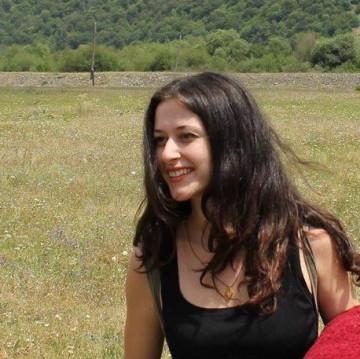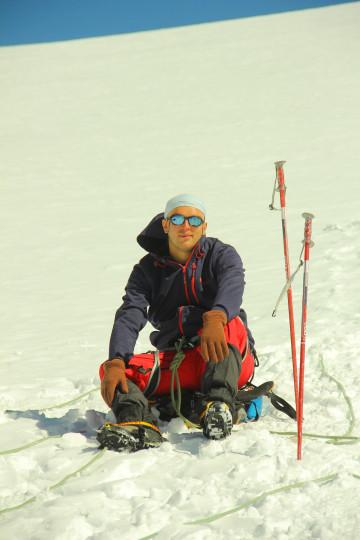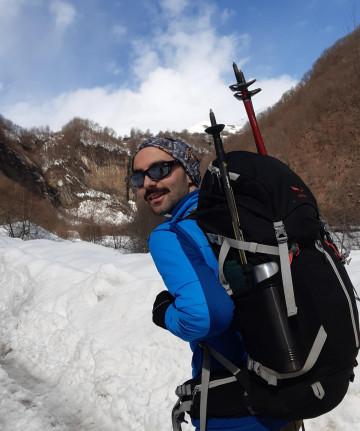
Help other travelers use your experience.
Review this destination, share your thoughts, impressions, pros and cons.
Let's make traveling easier than ever.
The Tevdortsmindan Monastery Complex is located in Kvemo Kartli, northwest of the village of Khatisopli in Bolnisi Municipality.
In the vicinity of the temple is a settlement, which in the High Middle Ages was known by the same name - Tevdortsminda. According to the inscriptions preserved on the temple, it is clear that the monastery existed here from an earlier period, before the 13th century. The temple of St. Theodore was built (based on architectural forms, it is believed that the temple was built on an early medieval church). The name of the temple also gave the name to the contemporary village near the monastery, Tevdortsmindan, which was founded in the 13th century. In the first half of the year, he sold it and donated it to Amirejib Kavtar Kajipasdze for the monastery he built. The monastery monks built the temple with the help of local dignitary Gabriel Chabaisdze, who donated money and land to them. In return, the monastery brotherhood established December 9 as the day of commemoration of the feudal spirit. The church of St. Theodore is a hall-shaped building with contemporary northern and later southern extensions. It is built of well-polished and processed tufa stone. The entrance to the church is from the south, and the exit is through the northern door to the northern extension. It is lit by arched windows built into all walls. The apse is semicircular. The hall is divided by two pairs of pilasters, between which decorative arches are made on the walls. The vault and the conch rest on arches carried on profiled imposts. The northern apse is also apsidal. As for the southern nave, it seems that initially there was only a stoa, but in the late Middle Ages it was converted into a chapel by building on both sides along the entire length of the temple. Judging by the shape of the paired windows in the eastern wall, they also served as a gunpowder store. The decoration of the facades of the temple, decorated with natural stone squares, is created by the ornamental lintels of the windows and the ornamental cornice of the southern nave. Of particular note is the fragment of the 12th-13th century relief of a praying man and a lion bas-relief, inserted in the interior of the late southern nave out of place and with secondary use. The temple had a contemporary stone kankeli, which repeats the 12th-13th century kankeli, which is widespread in Kvemo Kartli in its ornamentation. In the 19th century, the frescoes of the temple were still preserved, with Georgian and Greek inscriptions and the image of the builder of the church holding a model in his hand. The 13th-century frescoes on the eastern and southern walls of the temple are especially valuable. The inscriptions, which reveal the identity of the founder of the church and the donor of the land for the monastery: “In the name of God, by the intercession of the Holy Mother of God, Saint Theodore and all His saints, this is written by us, the monks and nuns of Saint Theodore, at the time when we were building this church, donated 60 ducats by Gabriel Chabaisdze. Let there be as many priests as there are, during the liturgy and the feast, and let the nuns be remembered during the consecration of the sanctuary. Whoever changes this, let him be cursed by the face of God, Amen”; “In the name of God, this is written, I, Ivan Kareparekhel, have dedicated the vineyard and the barn to Saint Theodore and have been buried for 3 days of Christmas, and have given it to the priests. Who will do this, Krul”; “In the name of God, this stone was laid by the monk Kavtel, may God have mercy on him”. To the northwest of the temple stands a small hall church built in the late Middle Ages, which is now consecrated in the name of Saint Catherine. The church is devoid of artistic decoration. The remains of the old fence, the monastery’s residential and farm buildings, and a medieval cemetery have been preserved around the temples. The church of Saint Theodore was restored in 2015-2016. Currently, there is a nunnery here. Lit.: Berdzenishvili D. Essays from the Historical Geography of Kvemo Kartli. Ts., 2014, pp.277-278; Silogava V. Inscriptions of Kvemo Kartli. Dmanisi II, Ts., 2000, p.249; Takaishvili E. Inscriptions of Armenian-Saorbelo Monuments. Return (edited by G. Sharadze). I. Ts., 1991. pp.39-41.



Our guides are ready to help you on this trip



Buy our tours online and explore incredible Georgia!




Help other travelers use your experience.
Review this destination, share your thoughts, impressions, pros and cons.
Let's make traveling easier than ever.
Please login to ask a question
Ask a Question